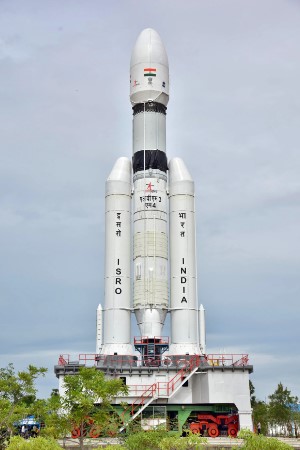Chandrayaan 3
Introduction:
Chandrayaan-3 is the third lunar exploration mission of the Indian Space Research Organisation. It has a lander and a rover similar to Chandrayaan-2 but it does not have an orbiter. Its propulsion module behaves like a communication relay satellite.
Table of Contents

Start Date: 14 July 2023
Rocket: LVM3 M4
Bus: Chandrayaan
Launch mass: 3900 kg
Manufacturer: Indian Space Research Organization (ISRO)
Power: Propulsion Module: 758 W Lander Module: 738 W, WS with Bias Rover: 50 W
Spacecraft Component: Rover
New Delhi:
Chandrayaan 3, India’s third lunar exploration mission, lifted off successfully from the Satish Dhawan Space Centre in Andhra Pradesh’s Sriharikota as per the scheduled launch time. This mission will make India the fourth country to land its spacecraft on the surface of the moon and demonstrate the country’s ability for a safe and soft landing on the lunar surface.
The spacecraft was launched on a GSLV Mark 3 (LVM 3) heavy-lift launch vehicle.
The journey from Earth to the moon for the spacecraft is estimated to take about a month and the landing is expected on August 23. Upon landing, it will operate for one lunar day, which is approximately 14 Earth days. One day on the Moon is equal to 14 days on Earth.
This is Indian Space Research Organisation’s (ISRO) follow-up attempt after the Chandrayaan-2 mission faced challenges during its soft landing in 2019.
“14th July 2023 will always be etched in golden letters as far as India’s space sector is concerned. Chandrayaan 3, our third lunar mission, will embark on its journey. This remarkable mission will carry the hopes and dreams of our nation,” said PM Modi on Twitter.

The Chandrayaan 3 mission by the Indian Space Research Organisation (ISRO) successfully lifted off from the Satish Dhawan Space Centre in Sriharikota, Andhra Pradesh, at 2.35 PM IST on Friday, July 14.
The mission follows Chandrayaan-2 where scientists aim to demonstrate various capabilities including reaching the orbit of the moon, making a soft landing on the lunar surface using a lander, and a rover coming out of the lander to study the surface of the moon.
Sixteen minutes after lift-off, the propulsion module successfully separated from the rocket and would orbit the earth about 5-6 times in an elliptical cycle with 170 km closest and 36,500 km farthest from earth moving towards the lunar orbit.

To witness the event live, you can watch the streaming of the launch on ISRO’s official website and YouTube channel.
Chandrayaan 3 is the third lunar exploration mission ready for takeoff in the fourth operational mission (M4) of the LVM3 launcher. ISRO is crossing new frontiers by demonstrating soft-landing on the lunar surface by its lunar module and demonstrating roving on the lunar terrain, the space agency said.
Chandrayaan-3, India's third moon mission, will launch today at 2.35 pm from the Satish Dhawan Space Center in Sriharikota, Andhra Pradesh. It is being led by India's own 'rocket woman' Ritu Karidhal Srivastava.
According to the Women's Economic Forum (WEF), Ritu Karidhal Srivastava is a senior scientist at the Indian Space Research Organization (ISRO), who played a key role in realizing the Mars Orbiter Mission.
He did his MSc in Physics from Lucknow University in 1996 and MTech from the Indian Institute of Science (IISc) in Bangalore. Her teachers and mentors at Lucknow University say that she was a very bright student.
According to WEF, she joined ISRO in November, 1997. He has worked for many prestigious missions of ISRO and has also held the responsible position of Director of Operations for many missions.


Pingback: 20. Chandrayaan 2: Behind the Scenes: Lessons Learned from Chandrayaan 2's Failure - Interestopedia
Pingback: Chandrayaan 1 to Chandrayaan 3: Unveiling India's Journey to Conquer the Moon. - Interestopedia
Pingback: 57. Chandrayaan 3 Soft Landing on Moon: Ultimate Explore of Lunar Frontiers - Interestopedia